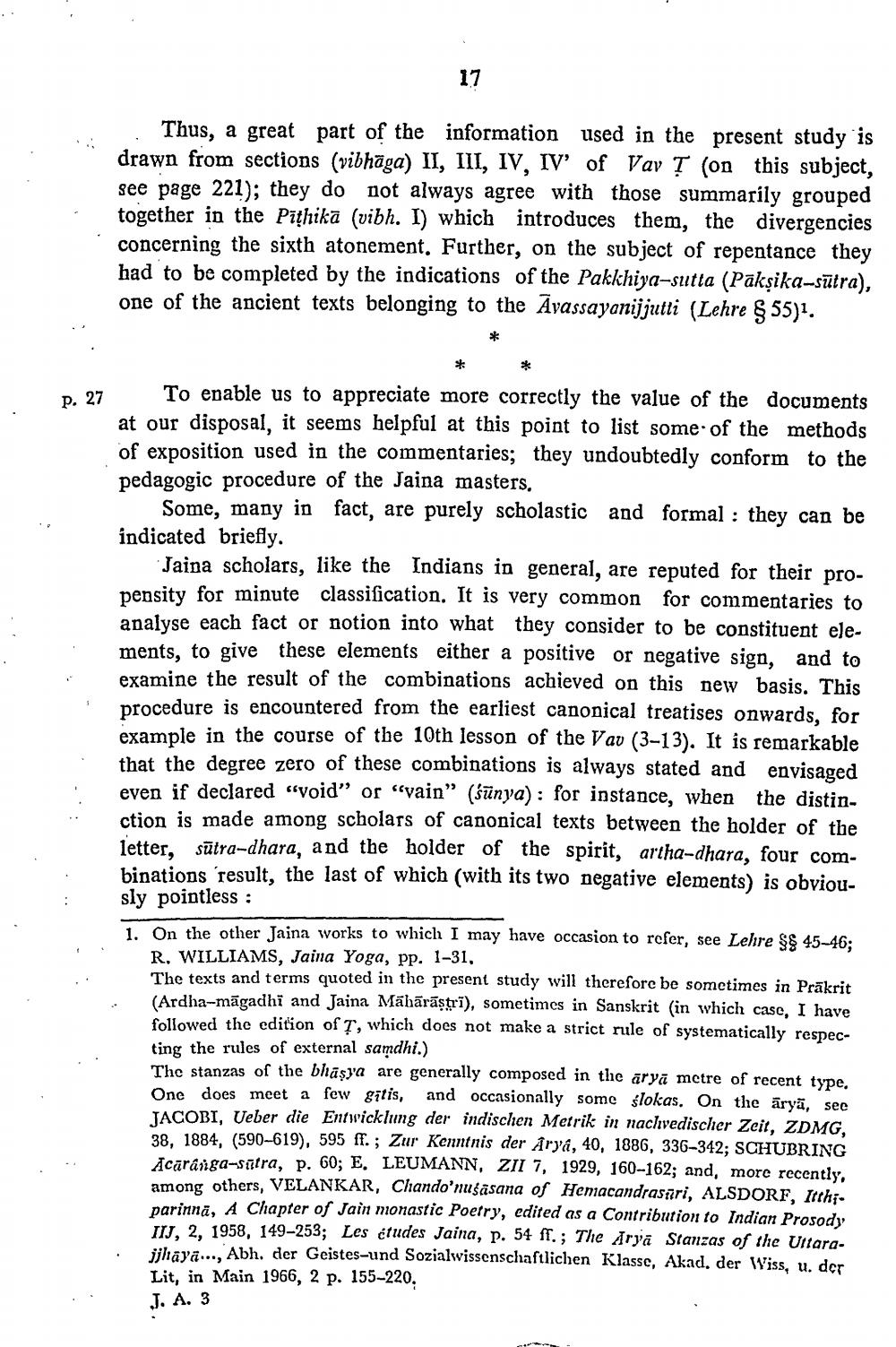________________
Thus, a great part of the information used in the present study is drawn from sections (vibhāga) II, III, IV, IV' of Vav Ţ (on this subject, see page 221); they do not always agree with those summarily grouped together in the Pīțhikā (vibh. I) which introduces them, the divergencies concerning the sixth atonement. Further, on the subject of repentance they had to be completed by the indications of the Pakkhiya-sutla (Pāksika-sūtra), one of the ancient texts belonging to the Āvassayanijjutti (Lehre 8 55).
*
*
P. 27
To enable us to appreciate more correctly the value of the documents at our disposal, it seems helpful at this point to list some of the methods of exposition used in the commentaries; they undoubtedly conform to the pedagogic procedure of the Jaina masters,
Some, many in fact, are purely scholastic and formal : they can be indicated briefly.
Jaina scholars, like the Indians in general, are reputed for their propensity for minute classification. It is very common for commentaries to analyse each fact or notion into what they consider to be constituent elements, to give these elements either a positive or negative sign, and to examine the result of the combinations achieved on this new basis. This procedure is encountered from the earliest canonical treatises onwards, for example in the course of the 10th lesson of the Vav (3-13). It is remarkable that the degree zero of these combinations is always stated and envisaged even if declared "void" or "vain" (sünya): for instance, when the distinction is made among scholars of canonical texts between the holder of the letter, sūtra-dhara, and the holder of the spirit, artha-dhara, four combinations result, the last of which (with its two negative elements) is obviously pointless :
1. On the other Jaina works to which I may have occasion to refer, see Lehre $$ 45-46;
R. WILLIAMS, Jaina Yoga, pp. 1-31. The texts and terms quoted in the present study will therefore be sometimes in Prākrit (Ardha-māgadhi and Jaina Māhārāstrī), sometimes in Sanskrit (in which case, I have followed the edition of T, which does not make a strict rule of systematically respecting the rules of external samdhi.) The stanzas of the bhāşya are generally composed in the aryā metre of recent type, One does meet a few gitis, and occasionally some slokas. On the āryā, sec TACOBI, Ueber die Entwicklung der indischen Metrik in nachvedischer Zeit, ZDMG. 38. 1884. (590-619), 595 ff.; Zur Kenntnis der Arya, 40, 1886, 336-342; SCHUBRING Icaranga-satra, p. 60; E. LEUMANN, ZII 7, 1929, 160-162; and, more recently. among others, VELANKAR, Chando'nusasana of Hemacandrastiri, ALSDORF, Ichinarinna. A Chapter of Jain monastic Poetry, edited as a Contribution to Indian Prosody TIJ. 2. 1958, 149-253; Les études Jaina, p. 54 ff.; The Arya Stanzas of the Ultaraühaya..., Abh. der Geistes-und Sozialwissenschaftlichen Klasse, Akad, der Wiss, u. der Lit, in Main 1966, 2 p. 155-220.
J. A. 3




